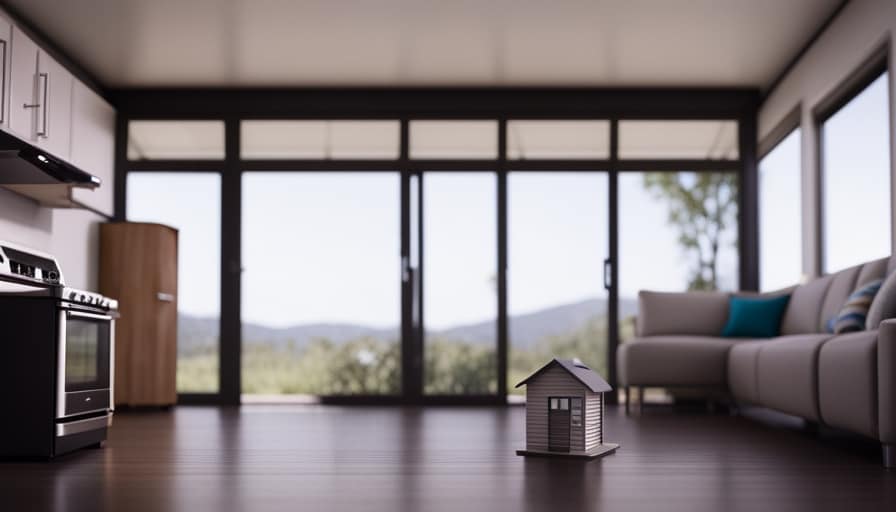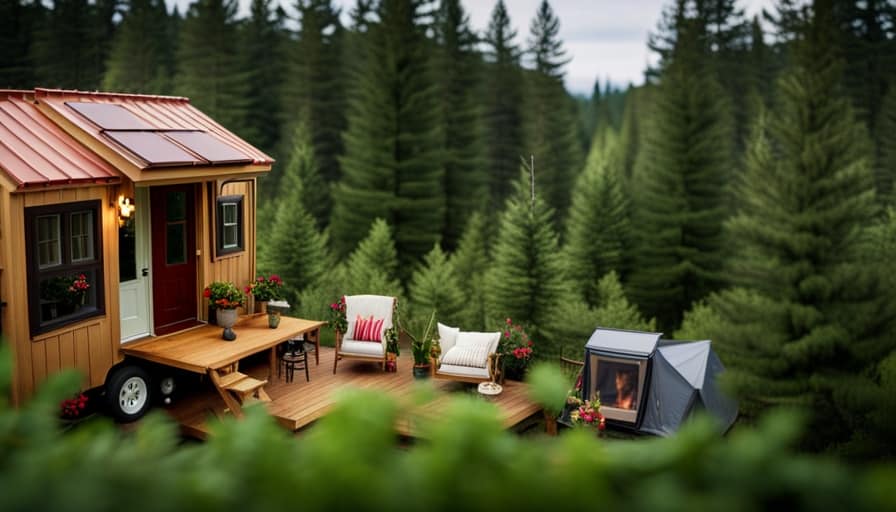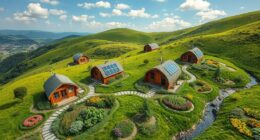For those of you dreaming of a tiny house, I have exciting news!
Did you know that there are countless opportunities to find land for your tiny home? With a little research and some creative thinking, you can discover the perfect spot to set up your cozy dwelling.
In this article, I will share my knowledge and expertise on how to navigate local zoning laws, connect with tiny house communities, and utilize online resources to find the land of your dreams.
Let’s get started on this exciting journey together!
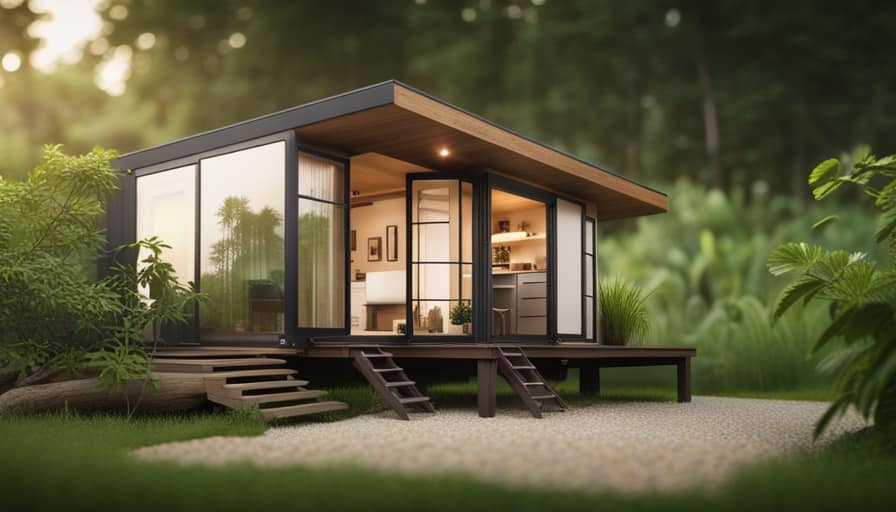
Key Takeaways
- Research local zoning laws and building codes to understand requirements and restrictions of the area.
- Consider exploring rural or suburban areas with larger lot sizes and minimal zoning restrictions.
- Join and connect with tiny house communities for insights, support, and information on building codes and financing options.
- Utilize online resources and platforms such as real estate websites, online classifieds, and social media groups to search for and connect with landowners and farmers.
Researching Local Zoning Laws
I’ll start by researching the local zoning laws to find out if I can legally place a tiny house on the desired land. Understanding building codes is crucial when it comes to building any type of dwelling, including tiny houses. Zoning laws vary from one area to another, so it’s essential to familiarize myself with the specific regulations of the location I’m interested in. This will ensure that I comply with all the necessary requirements and restrictions.
Additionally, checking for available utilities is another important aspect of finding land for a tiny house. It’s essential to determine if the land has access to water, electricity, and sewage systems. By doing thorough research on local zoning laws and utilities, I can confidently move forward in exploring real estate listings that align with my tiny house plans.
Exploring Real Estate Listings
I’m going to search for real estate listings that offer suitable land for a tiny house. Exploring alternative housing options and considering off-grid living possibilities, finding the right piece of land is crucial for making your tiny house dream a reality. Here are some tips for finding the perfect property:
- Look for land with minimal zoning restrictions
- Seek out rural or suburban areas with larger lot sizes
- Consider purchasing land in tiny house communities or co-housing developments
- Explore online platforms and real estate websites dedicated to alternative housing options
Connecting With Tiny House Communities
Once you’ve found the perfect location for your tiny house, it’s important to connect with tiny house communities to gain insights and support from others who share the same lifestyle.
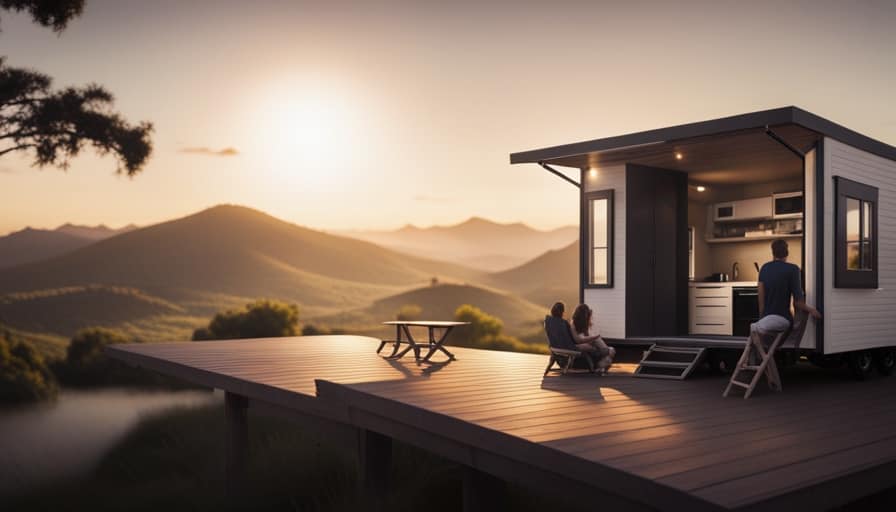
Joining a tiny house community can provide valuable information on building codes and financing options specific to tiny homes. These communities often have experienced members who can offer guidance and advice on navigating the complexities of local building regulations.
They can also share their experiences with different financing options, such as personal loans or crowdfunding platforms.
Connecting with these communities can help you stay updated on the latest developments in the tiny house movement and connect with like-minded individuals who can provide valuable support throughout your tiny house journey.
Contacting Local Landowners and Farmers
To find potential land for a tiny house, I can reach out to local landowners and farmers. Here are some steps to take when contacting them:
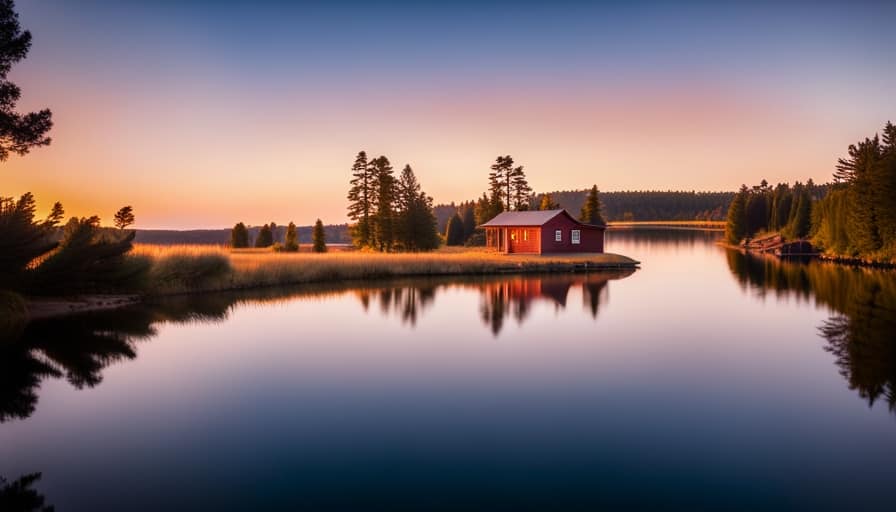
- Research local land assessments to identify suitable areas for a tiny house.
- Prepare a concise description of your project and its benefits to present to landowners.
- Inquire about any available land or unused parcels that may be suitable for your tiny house.
- Discuss the possibility of a land lease agreement or a rent-to-own arrangement.
Contacting local landowners and farmers can be a great way to find land for a tiny house. They may have unused or underutilized land that can accommodate your needs. It’s important to be respectful and professional during these conversations, and to inquire about any necessary building permits or zoning restrictions.
Once you have explored this option, you can also consider utilizing online resources and platforms to widen your search for the perfect plot of land.
Utilizing Online Resources and Platforms
I can use online resources and platforms to expand my search for land suitable for a tiny house. Online classifieds and social media groups are valuable tools that can help me connect with people who’ve land available for rent or sale.
Many websites have dedicated sections for real estate, where I can search specifically for land suitable for a tiny house. These platforms often provide detailed information about the land, including its size, location, and price.
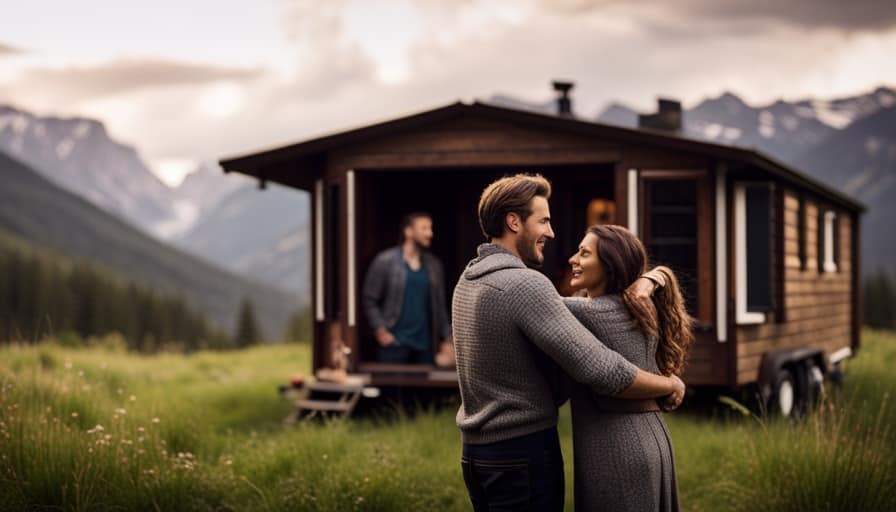
Additionally, social media groups focused on tiny house living or alternative housing can be a great source of information and connections. By joining these groups, I can interact with like-minded individuals who may have leads on available land or can offer guidance and advice on finding the perfect spot for my tiny house.
Frequently Asked Questions
Can I Build a Tiny House on Any Type of Land, Such as Agricultural or Commercial Zones?
Finding suitable land for a tiny house can be challenging due to zoning and regulations. It’s important to research local laws and restrictions. Agricultural or commercial zones may have specific limitations, so it’s best to consult with local authorities.
Are There Any Specific Restrictions or Regulations for Parking a Tiny House on Wheels on Private Property?
There are specific regulations and parking restrictions for parking a tiny house on wheels on private property. It’s important to research local zoning laws and obtain any necessary permits to ensure compliance.
How Can I Find Landowners or Farmers Who Are Open to Allowing Tiny House Dwellers on Their Land?
Finding landowners who are open to allowing tiny house dwellers on their property can be challenging, but there are ways to increase your chances. Research local zoning laws, network with local community groups, and use online platforms to connect with potential landowners.

Are There Any Online Platforms or Resources Specifically Dedicated to Connecting People Looking for Land for Their Tiny Houses?
There are online platforms dedicated to connecting people looking for land for their tiny houses. I can provide tips for negotiating with landowners for tiny house placement.
How Do I Navigate the Process of Obtaining Necessary Permits and Approvals for Setting up a Tiny House on Privately Owned Land?
Navigating the process of obtaining necessary permits and approvals for setting up a tiny house on privately owned land can be overwhelming. However, finding landowners or farmers who are open to allowing tiny house dwellers on their land is a great starting point.
Conclusion
So there you have it! Finding land for your tiny house may seem like a daunting task, but with a little research and creativity, it can be an exciting adventure.
By exploring local zoning laws, real estate listings, and connecting with tiny house communities, you’ll be well on your way to finding the perfect spot.

Don’t forget to reach out to local landowners and farmers and utilize online resources and platforms.
Happy hunting!
I’m Theodore, and I love tiny houses. In fact, I’m the author of Tiny House 43, a book about tiny houses that are also tree houses. I think they’re magical places where imaginations can run wild and adventures are just waiting to happen.
While tree houses are often associated with childhood, they can be the perfect adult retreat. They offer a cozy space to relax and unwind, surrounded by nature. And since they’re typically built on stilts or raised platforms, they offer stunning views that traditional homes simply can’t match.
If you’re looking for a unique and romantic getaway, a tree house tiny house might just be the perfect option.
